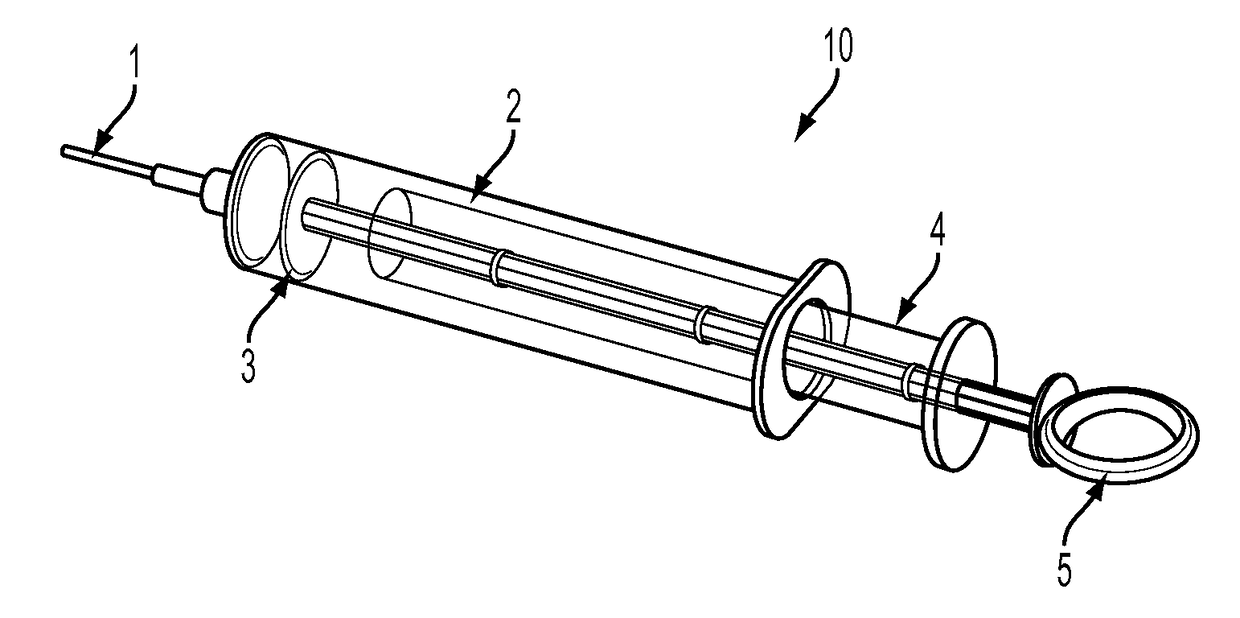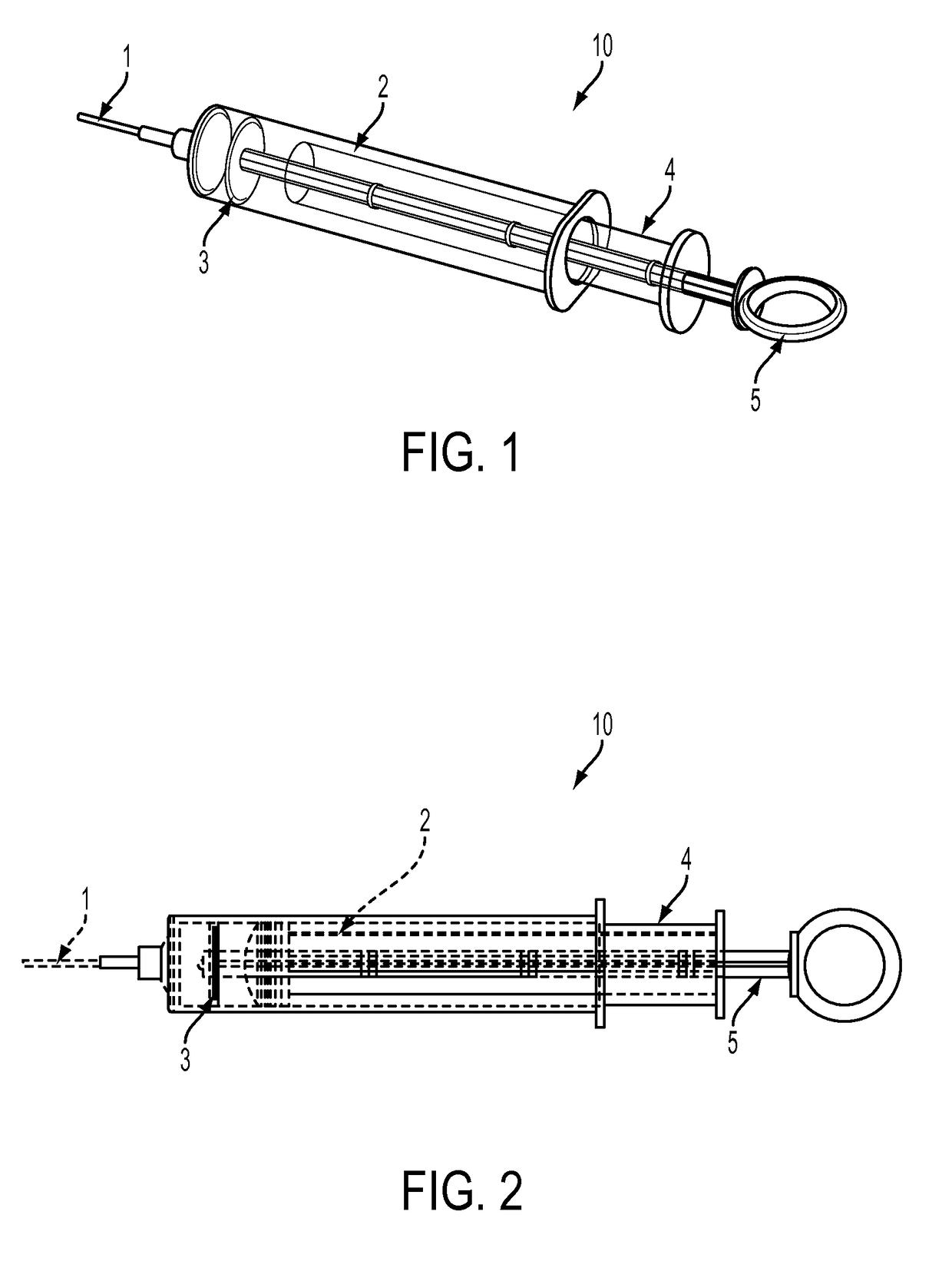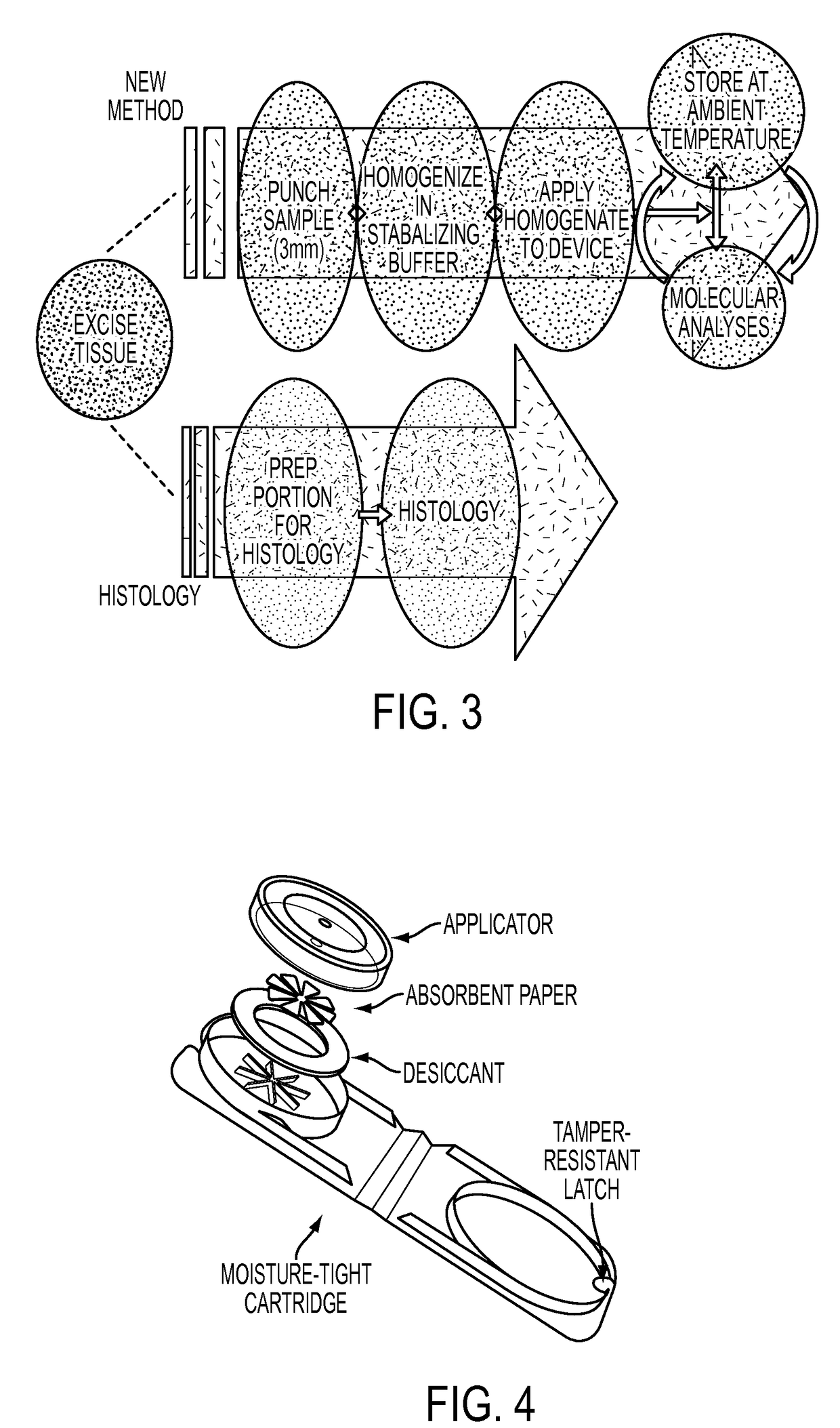Biological sample collection and preservation
a biomarker and sample technology, applied in the field of biomarker collection and preservation, can solve the problems of limiting the analysis of biomarkers, affecting the detection accuracy of biomarkers, etc., and achieving the effects of reducing the difficulty of biomarker extraction, and reducing the number of samples
- Summary
- Abstract
- Description
- Claims
- Application Information
AI Technical Summary
Benefits of technology
Problems solved by technology
Method used
Image
Examples
working examples
[0037]Rat liver tissue (approx. 50 mg) was homogenized in two separate reagent mixtures, A: phosphate buffer saline with 0.5% Triton and B: 10 mM Tris, 1 mM EDTA with 0.5% Triton-X100. Enzymatic activity was compared for homogenate samples that remained wet and equivalent samples that were dried on filter paper (FIG. 5). Activities of alpha-galactosidase (alpha-GAL) and beta-galactosidase (beta-GAL) were measured by incubating at 37° C. for 2 hours with 4-methylumbelliferyl-alpha-D-galactopyranoside and 4-methylumbelliferyl-beta-D-galactopyranoside, respectively. 4-methylumbelliferone (4-MU) formation was measured by fluorescence. Activity levels were similar between wet and dried homogenization samples.
[0038]Three separate reagent mixtures were used to homogenize rat liver tissue, A: nuclease-free water B: nuclease-free water with 0.5% CHAPS and C: nuclease-free water with 0.5% Triton-X100. Portions of the homogenates were frozen while separate portions were applied to HemaSpot Dev...
PUM
| Property | Measurement | Unit |
|---|---|---|
| size | aaaaa | aaaaa |
| temperature | aaaaa | aaaaa |
| sub-freezing temperatures | aaaaa | aaaaa |
Abstract
Description
Claims
Application Information
 Login to View More
Login to View More - R&D
- Intellectual Property
- Life Sciences
- Materials
- Tech Scout
- Unparalleled Data Quality
- Higher Quality Content
- 60% Fewer Hallucinations
Browse by: Latest US Patents, China's latest patents, Technical Efficacy Thesaurus, Application Domain, Technology Topic, Popular Technical Reports.
© 2025 PatSnap. All rights reserved.Legal|Privacy policy|Modern Slavery Act Transparency Statement|Sitemap|About US| Contact US: help@patsnap.com



